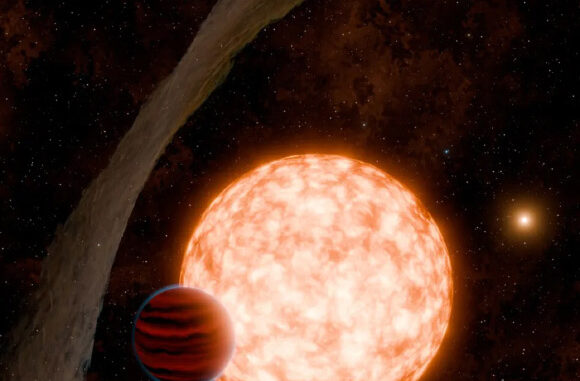
Astronomers have discovered a transiting exoplanet — named IRAS 04125+2902b — orbiting a 3-million-year-old, 0.7-solar-mass protostar in the Taurus Molecular Cloud.
IRAS 04125+2902b has a radius of 0.96 Jupiter radii and a mass of <0.3 Jupiter masses.
Also known as TIDYE-1b, the giant exoplanet orbits it parent star, IRAS 04125+2902, once every 8.83 days.
The system is located approximately 522 light-years away in the constellation of Taurus.
It is part of the Taurus Molecular Cloud, an active stellar nursery with hundreds of newborn stars.
“IRAS 04125+2902b challenges previous theories about the speed of planet formation,” said University of North Carolina at Chapel Hill astronomer Madyson Barber and colleagues.
“While Earth took 10-20 million years to form, this exoplanet emerged in a mere 3 million years and orbits its star roughly every week.”
“Discovering planets like this one allows us to look back in time, catching a glimpse of planetary formation as it happens.”
First detected by NASA’s Transiting Exoplanet Survey Satellite (TESS), IRAS 04125+2902b is the youngest known transiting planet.
The discovery sheds light on potential differences between our Solar System and planetary systems hosting close-in giant planets like IRAS 04125+2902b, providing a greater context for our own cosmic neighborhood.
It also opens new research avenues, as this planet, still within its natal disk of material, allows scientists to study the formation process up close.
Follow-up studies will analyze how the planet’s atmosphere compares to the surrounding disk material, providing clues about its journey to its compacted orbit.
The astronomers will also examine whether IRAS 04125+2902b is still growing by accreting material or possibly losing its upper atmosphere due to the influence of its host star.
“Planets typically form from a flat disk of dust and gas, which is why planets in our Solar System are aligned in a ‘pancake-flat’ arrangement,” said Dr. Andrew Mann, principal investigator of the Young Worlds Laboratory and an astronomer at the University of North Carolina at Chapel Hill.
“But here, the disk is tilted, misaligned with both the planet and its star — a surprising twist that challenges our current understanding of how planets form.”
The discovery is reported in a paper published today in the journal Nature.
Be the first to comment